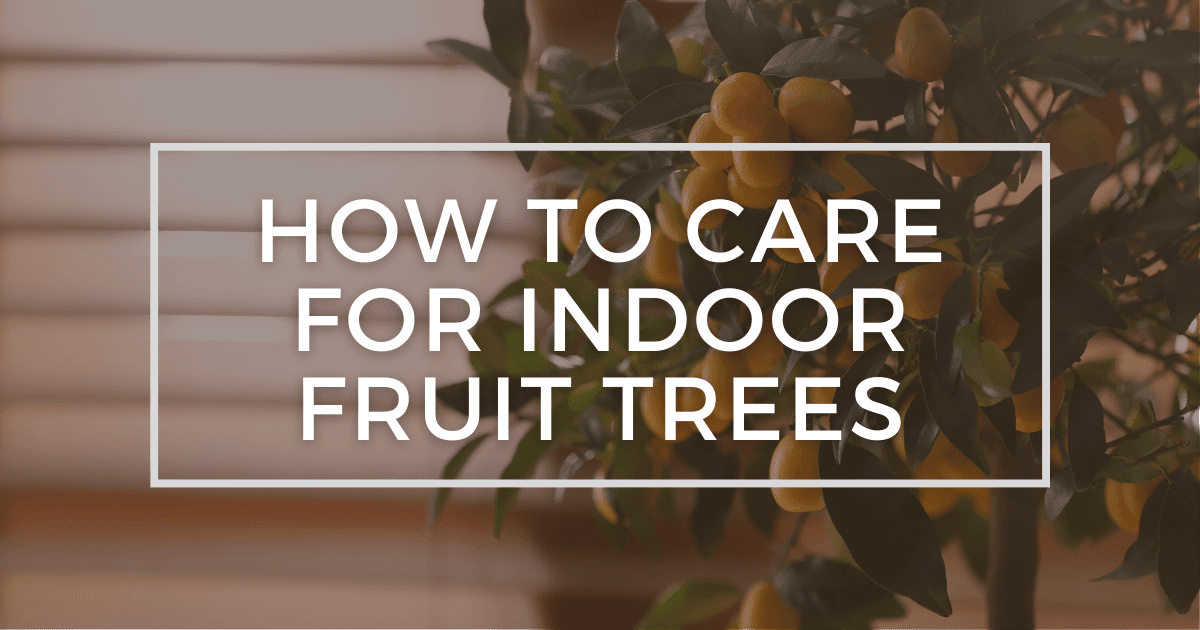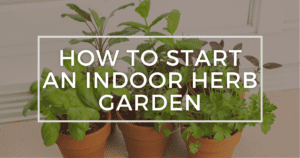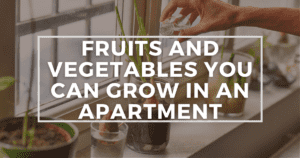Growing fruits indoors is the new big thing in the gardening and planting world. People around the globe are trying to grow more plants indoors, and a vast majority of these people pick fruit trees, and rightfully so! However, knowing how to care for indoor fruit trees is also imperative.
From lemons to avocados and even bananas, there are loads of exceptional fruits you can grow within the walls of your home. But as you can guess, taking care of them is essential if you want to make them sustainable and high-yield.
So, without further ado, let’s get straight into it!
10 Best Ways to Care for Indoor Fruit Trees
We’ve seen excited homeowners make the mistake of spending too much time figuring out what fruit trees can be grown indoors but totally neglecting the need to learn about their caretaking. Although choosing the right plant is ideal, taking care of them is also as important as it gets!
Therefore, go through these tips and learn all you need to know!
#1 Maintain Their Lighting Requirement
Indoor plants need adequate light throughout the day to thrive. The best place to keep them is near a window where they can get access to direct sunlight.
However, if that’s not an option, you can also use artificial lighting to fulfill their needs. Just make sure that they get a light span of at least 12 hours per day for proper growth.
#2 Don’t Water Them Too Often
A common mistake beginners make is watering their plants too often. You see, the excitement that comes with watering plants carries people away, and their mistake ruins the plant. If you see your plant’s lush leaves turn dark and wilted, it means you watered it too much.
The ideal water requirement differs from plant to plant. However, to best care for indoor fruit trees, you should water them after every two days in general.
#3 Take Care of the Soil
The soil is another crucial component that beginners mess up. Your soil needs to have the right proportion of nutrients for your indoor trees. The right blend of minerals and mulch is the way to go.
You can get packs of commercial soil and use them as per the guidelines. On the other hand, you can also make your own fertilizer using fruit and veggie scraps, bones, and other organic matter. But if you’re a beginner, the first option will suit you better.
#4 Transport Them With Caution
Perhaps the most vital aspect to care for indoor trees is to transfer them with great care. When the tree grows too big for its current pot, you need to change the pot and transfer them to a larger area to optimize its growth.
While doing so, ensure that no rootlets are damaged. Also, keep an eye on the depth you put the plant in. It should be equal to the last pot they were in. This is an important detail you don’t want to miss!
#5 Place the Trees in the Right Spot
Indoor plants have a certain set of requirements along the lines of humidity, temperature, airflow, and other similar things. Therefore, you need to find a spot that allows them access to the right amount of all these variables.
Ideally, somewhere near a bright window or anywhere that has access to bright light.
#6 Keep an Eye on the Humidity
60 to 70 percent marks the sweet spot when it comes to humidity for indoor plants. You can get a basic sensor to monitor this number, and a humidifier to alter it as per your liking.
#7 Harvest the Fruits With Care
When plucking the fruits from the branches, use a gentle rotating motion to get them off. If you pull on the branch too hard, it can cause damage to the tree, and you’ll lose a fruiting branch in the process.
Therefore, gently rotate the fruits until they fall right off the stem.
#8 Choose the Right Pots
Pick the ideal pot size, depending on the tree you have. Some need larger pots, while some grow better in a confined space.
Medium-sized pots work best for indoor plants until they grow tall, and you need to shift them into larger ones.
#9 Keep the Pests Away
Using any kind of pesticide will do as long as it doesn’t harm the plant or you! Again, picking the right one here is subject to loads of variables.
However, it would be best to use organic, non-toxic product for the best results.
#10 Maintaining a Constant Temperature and Ventilation
Temperature and proper airflow are two of the most important things you need to consider. Different plants have different requirements when it comes to the right temperature.
Therefore, do some research and get only those plants that have an ideal temperature that’s close to your local temperature.
As for the air flow, keeping the plants near a window or a door will suffice.
Final Thoughts
Whether you have to care for indoor citrus trees or the infamous banana, one thing remains common—hard work. These plants give you delicious fruit, and in return, you must take care of their basic requirements.
Just following the basic guidelines, like watering them on time and keeping them well-lit, can dramatically increase your yield as well as the plant’s life. But if you follow the remaining tips as well, you’ll be amazed at the results!
Now you should care for indoor fruit trees in a much better way than you used to do.
Happy planting!




